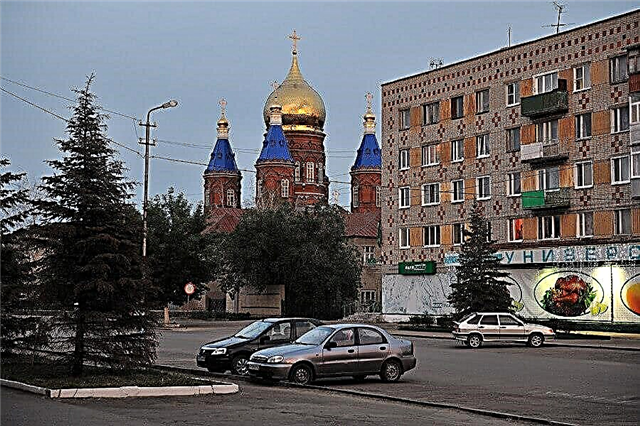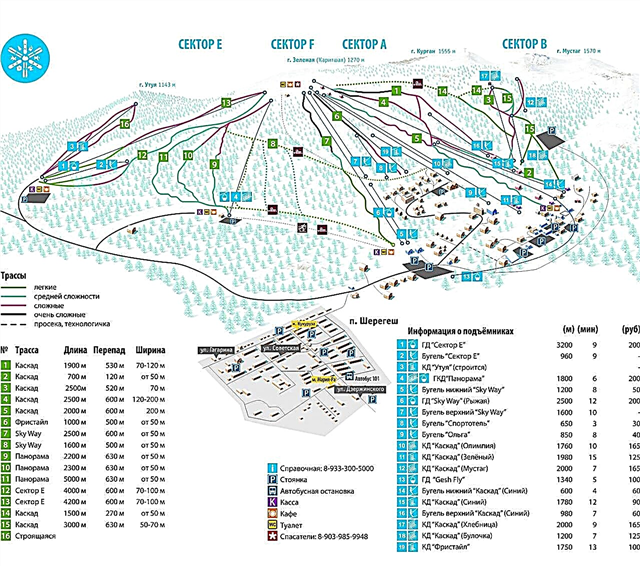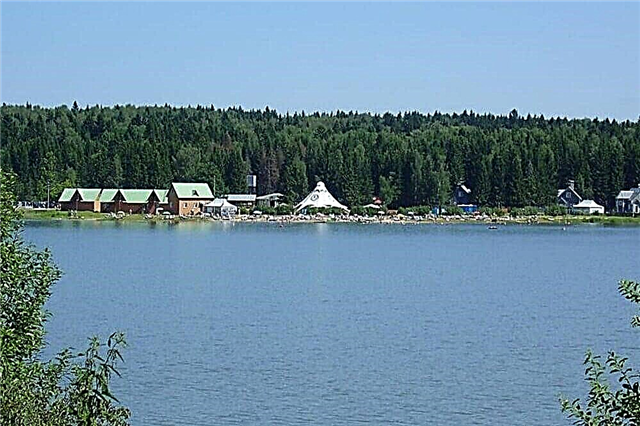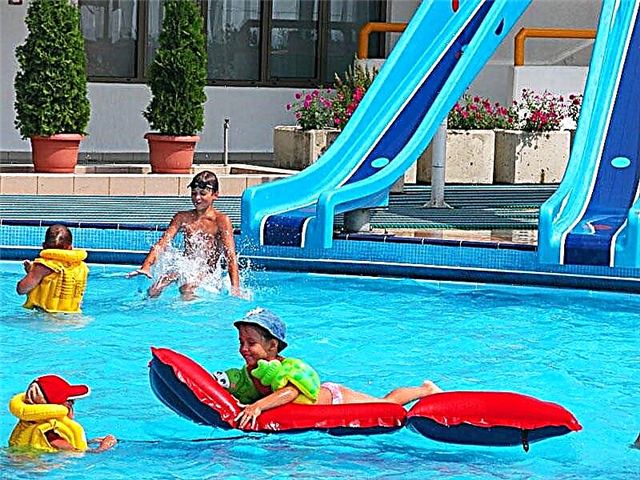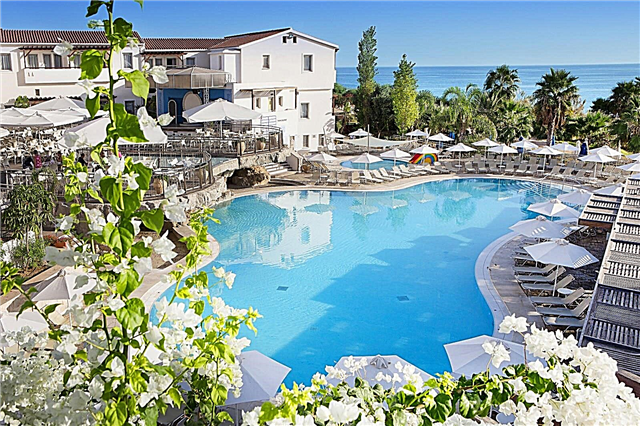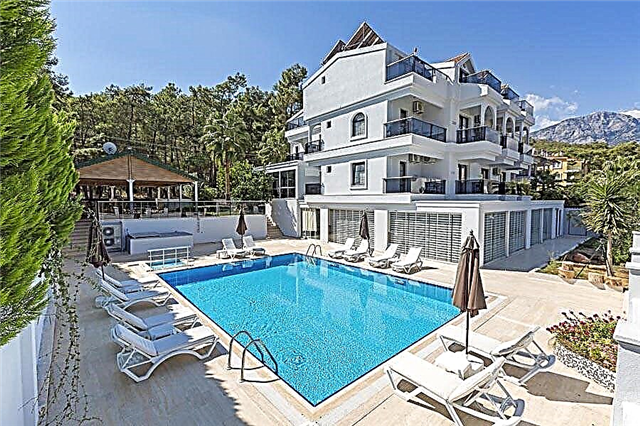Not so long ago, the historic center was landscaped in Yoshkar-Ola, old buildings were restored and new ones were erected, which have become modern masterpieces of architecture. It is worth starting a tour of the city with a visit to the embankments on the Malaya Kokshaga River. On the embankments of Bruges and Amsterdam, you can feel like in Belgium and Holland, and on the Voskresenskaya embankment there are many old mansions. The restored Tsarevokokshay Kremlin is an important sightseeing object.
Yoshkar-Ola is an unusual Mari city that has preserved a unique national culture. Interesting exhibitions dedicated to the culture, art and life of the indigenous peoples of the republic can be seen in the National Museum, the Museum of Fine Arts and the Art Gallery. The theaters perform classical and modern performances in two languages - Mari and Russian.
The most interesting and beautiful places
List, photo with names and descriptions of the best sights of the city. He will help you plan routes to explore the top metropolitan areas of the city in 2-3 days.
Bruges embankment
This place by the Malaya Kokshaga River is considered one of the most interesting because of its atypical architecture for the city. The promenade with Flemish-style houses looks like a corner of Belgium. Small buildings with a height of 3-4 floors are built of bricks. Their façade is decorated with stucco, arches and sculptures. Turrets and spiers rise above the rooftops. The most original buildings are the Spasskaya Tower, the wedding palace, and the puppet theater.

Patriarshaya Square
The main tourist area of the city on the bank of Malaya Kokshaga. Founded in 2010. There is a monument to Patriarch Alexy II, the founder of the Mari diocese, in whose honor the square got its name. Also on the square there are monuments to Saints Peter and Fevronia, Empress Elizabeth Petrovna. The tower on the square is decorated with an interesting clock "12 Apostles". On the Voskresensky bridge you can get to the Voskresenskaya embankment.

Obolensky-Nogotkov Square
The dominant feature of the square is the 6-meter-high monument to Obolensky-Nogotkov, located opposite the building of the government of the republic. Another monument that attracts attention is dedicated to Bishop Leonid. There is an art gallery on the square, at the entrance to which there is a copy of the Moscow Tsar Cannon. There is a clock on the facade of the gallery, which, instead of the standard chiming clock, plays a real performance.

Republic Square and the Blessed Virgin Mary
The square received its unusual double name because of the legend according to which the Mother of God descended to the land of Mari-El in the form of an icon and became the patroness of the people living here. The decoration of the square is dedicated to the feast of the Annunciation. In its center there is a fountain with a sculpture of the Archangel Gabriel and the Mother of God with a baby in her arms. The Annunciation Tower and the Annunciation Cathedral were also built on the square.

Tsarevokokshay Kremlin
The historical monument is located in the city center. The original medieval fortress was completely destroyed, and the Market Square was located in its place for a long time. The Kremlin was restored in 2009. It consists of a brick wall with four towers, a temple and a park area. In the courtyard there is a monument to Tsar Fyodor Ioannovich, who founded Tsarev's city on Kokshag. The information boards tell the story of Yoshkar-Ola.

Clock "12 Apostles"
An unusual clock, embodying a plot from the Gospel, was opened in 2011. The dial itself is located on the high tower of the shopping and entertainment center on Patriarch Square. Every three hours, on the long balcony below it, the gates open with a bell ringing, from which all the apostles appear in turn, including Judas, clutching a bag of silversmiths in his hand. To the sound of chants, the 1.5-meter-high figures pass through the entire balcony.

Annunciation tower
Located on Republic Square and St. Virgin Mary. The tower was built in 2007 and is considered one of the most recognizable symbols of Yoshkar-Ola. On its background, tourists especially often take photos. The clock on the tower is a small copy of the clock mechanism of the Spasskaya Tower of the Moscow Kremlin. The diameter of the watch is 3.5 meters. The accuracy of their course is regulated by the satellite signal. Thanks to the loudspeakers, the striking of the clock can be heard throughout the city.

National art gallery
Has been working since 2007. The gallery building in the original Renaissance style is located on Obolensky-Nogotkov Square. In the main tower of the gallery, a clock is installed, which, when the chimes strike, play out the scene of the coming of the Virgin to the Mari land. One of the permanent expositions in the gallery is an exhibition dedicated to the ethnic cultural heritage of the Mari - national costumes, jewelry, paintings.

Arkhangelsk settlement
The street, named after the Archangel Gabriel, was founded in 2011, it is located near the Voskresenskaya embankment. A cultural attraction on it is an architectural complex of 11 European-style buildings. They are decorated with sculptures of birds and animals, which tourists are looking at with interest. The buildings house public organizations - banks, shops, cafes.

Sculptural composition "Yoshkin cat"
The comic monument is located at the entrance to the Mari University. A satisfied cat sits on a bench, next to him are the newspaper "Naked Truth" and a fish skeleton. Next to the cat there is a free place for those who want to pose for tourists' photos. A group of masters worked on the sculpture - Shilov, Yandubaev, Shirnin. Popular belief says that if you rub a cat's nose or paw, it will charge you with good luck in all matters.

Uspenskaya street
A picturesque street with many historical architectural ensembles. All structures on it are made in the same style, which is called "Yoshkarolinskaya eclecticism". One side of the street is designed "like Byzantium", the other - "like Venice". On the “Venetian” side there is an elite hotel “Ludovico Maro”, on the “Byzantine” side - the Ministerial House, the Chapel of St. Nicholas the Wonderworker, the Cathedral of the Assumption of the Blessed Virgin Mary.

Military Glory Square
The memorial ensemble, created in memory of the soldiers who died during the Great Patriotic War, is located in the Central City Park. In the center of the square is a 20-meter-high granite pilot with a 6-meter high bronze sculpture of a warrior. His resolute image symbolizes the fearlessness and heroism of Soviet soldiers. Near the obelisk there is a bowl with the Eternal Flame in the form of a five-pointed star.

Beautiful embankments of Yoshkar-Ola
Not only the Bruges promenade is worthy of attention. You can walk along the banks of Malaya Kokshaga on Voskresenskaya embankment and Amsterdam embankment. They are also decorated with beautiful facades of houses and new monuments.
Voskresenskaya embankment
It stretches along the bank of the Malaya Kokshaga River. Its length is 1.5 km. Both residents of the city and its guests love to walk on the embankment. Tourists will appreciate the beauty of the river and the attractions located near the embankment. The monument to Pushkin was erected at the intersection of the embankment with the street named after the poet, and at the crossroads with Gogol Street there is a monument to Gogol. The masterpieces of architecture on the other side are clearly visible.

Waterfront amsterdam
A small and cozy walking area from the Gogolevsky pedestrian bridge to Pushkin street. On it there are houses in the old European style, reminiscent of fabulous palaces. The creators of the architectural ensemble created their own corner of Holland on a small section on the bank of Malaya Kokshaga. On the facades of the houses there are figurines from children's fairy tales. The buildings on the embankment are mainly of cultural significance.

Boulevards for walking in Yoshkar-Ola
Another popular walking area is the boulevards decorated with flower beds, fountains and beautiful sculptures.
Chavaina Boulevard
Named after Sergei Grigorievich Chayvan. A monument to the founder of national poetry and literature has been erected on the boulevard. The pedestrian boulevard runs between Victory Park and the Park of Culture almost through the entire city. It is decorated with beautiful flower beds and cascades of fountains, there are souvenir points. In the dark, beautiful illumination turns on on it, creating a romantic mood for those walking.

Victory Boulevard
Long walking area, stretching from Victory Park to the Memorial of Military Glory in Central Park. In 2006, it underwent a large-scale reconstruction. The boulevard is paved with paving stones, several fountains have been installed, flower beds have been laid out. For relaxation while walking along the entire length of the boulevard there are benches, including the unusual Bench of Love and Fidelity. A little further there is a Monument to a Happy Family.

Gardens and parks of Yoshkar-Ola
You can plunge into the abundance of greenery in city parks. These are great places to relax with the whole family. You can walk along the well-groomed alleys, sit on a bench and breathe in the fresh air. The city's Botanical Garden deserves special attention.
Central Park of Culture and Rest
A great place for relaxation and interesting leisure. The Memorial of Military Valor is installed in its center. Fountains and unusual sculptures are located throughout the park. There are attractions for children. There is a lot of vegetation in the park. More than 50 species of shrubs and trees grow in it - larch, Siberian cedar, Manchurian walnut. The sculptural composition "The Tree of Life" is placed among the green spaces.

Botanical Garden-Institute PSTU
Founded as a dendrological nursery in 1927. On an area of more than 70 hectares, thousands of plants from different continents grow in the open air - decorative, fruit, and medicinal. The park has beautiful landscaped areas and ponds with aquatic plants. There is a rose garden and greenhouses with subtropical and tropical plants. Educational excursions are conducted for visitors.

Italian park
A picturesque park area adjacent to the Voskresenskaya embankment. It is beautifully decorated with different types of trees. The Medici maple alley with exquisite sculptural compositions looks especially beautiful. Chief among them is the sculpture of the Florentine ruler by Andrey Kovalchuk. Lorenzo Medici sits on the throne and holds an open book in his hands. The bronze monument symbolizes the greatness of science and art.

Voskresensky park
Laid down in 2011. It is planted with about 1000 maples and blue spruces. The total area of the park is 5.7 hectares. The main entrance to the park is made in the form of a beautiful red brick arch, topped with a tower with a high spire. The park has asphalt alleys along which benches are placed. A small fountain has been erected in the depths of the park. The park continues to be landscaped, it is planned to arrange entertainment areas.

The main theaters of Yoshkar-Ola
You shouldn't save time on visiting city theaters. These are modern beautiful complexes, it will be especially interesting to visit a national Mari performance or an opera here.
Republican Puppet Theater
Since 2014, the theater has been located in a building similar to a medieval castle on Patriarch Square. The performances are performed in two halls, the main one of which can accommodate 300 spectators. The main stage has an area of 230 m². In addition to watching performances, visitors can get behind the scenes as part of an excursion group, as well as view exhibits in the theater museum. The theater's repertoire includes performances based on the works of Anderson, Tolstoy, Pushkin.

Mari Opera and Ballet Theater
Founded in 1968. The modern theater building, equipped with modern equipment, was erected in 2014 near the embankment and Central Park. The theater's repertoire includes both modern and classical performances of opera and ballet, performances for children. Of particular interest to tourists will be the national operas "Akpatyr" and "Aldiar", to the music of Mari composers. Open-air theater festivals are held in the summer.

Drama Theater named after M. Shketan
Located near the Opera and Ballet Theater. The National Theater was founded in 1919 as a traveling drama club of the Mari peoples. And already in 1929 it received the status of a state theater. To this day, it remains the main cultural center of the Mari people. The professionalism of the theater troupe was appreciated not only by the audience, but also by the international theater community. In 1998 the theater received the prestigious Golden Palm award.

Russian Drama Theater named after G. Konstantinov
The Academic Theater was named after Georgy Konstantinov, who directed it from 1964 to 1994. The theater's repertoire includes the best productions of world classical drama, as well as experimental performances, comedies and performances for children. The theater is located in the city center next to the Tsarevokokshay Kremlin. The theater has been located in this building of strict classical style since 1984.

The best museums in Yoshkar-Ola
The most interesting museums in the city, which you should definitely visit.
National Museum of the Republic of Mari El
The Republican Museum of Local Lore has been operating since 1920. Its expositions are dedicated to the culture, traditions and history of the Mari. The museum is located in a building with the status of an architectural monument, built in 1903. In total, about 200,000 exhibits are kept in the museum's funds. The largest collection - about 90,000 items, has an archaeological theme. It includes household and cult objects, clothing and jewelry of the peoples inhabiting the Volga region.

Museum of the history of the city of Yoshkar-Ola
The building of the museum itself on Voskresenskaya Street is already a cultural monument. It is located within the walls of the Chulkov estate - a patterned two-story house from 1911 with a mezzanine and an outbuilding. The museum contains about 20,000 items. Its expositions tell about the history of the city, starting from the founding of Tsareva Castle on Kokshag. The museum also conducts bus and walking tours of Yoshkar-Ola.

Art Museum
The creation of the museum began with exhibition activities in 1981. The guests of the museum had a unique opportunity to see the exhibitions of Roerich, Glazunov, Andriyaka. As part of temporary exhibition programs, works of art were brought to the museum from the Hermitage, museums in Hungary, Finland and Estonia. The museum is actively involved in the promotion of the creativity of the Mari masters. The main exhibition is called "Mari Color".

Museum of Folk and Applied Arts
Dedicated to the folk and craft art of the Mari. It is located in an old wooden mansion with exquisite carvings, demonstrating the skill of the architects. The museum displays more than 200 items that introduce visitors to the national culture and art, painting and sculpture by masters from Mari El. Ethnographic holidays are regularly held - reconstruction festivals, a festival of national costumes.

Cheese museum
There is a large dairy production plant in Yoshkar-Ola, which produces, among other things, high-quality cheese, which contributed to the opening of a museum with an unusual theme. Museum staff will tell guests about the development of cheese making in Mari El, popular types of cheese, manufacturing technology and recipes. Guests will take part in a master class on making cheese products, and taste several types of cheese in the tasting room.

Monuments and sculptures of Yoshkar-Ola
The streets of the city are adorned with beautiful monuments. There are many modern sculptures in the city on the main embankments and squares.
Monument to A.S. Pushkin and Eugene Onegin
It is located on Pushkin Street near Voskresenskaya Embankment. Bronze sculptures of the poet and his literary hero stand on a pedestal against the background of the water surface. The author of the sculpture is the artist Andrey Kovalchuk.He portrayed the poet with a piece of paper in his hands, pondering over the plot of the novel. Onegin stands next to him and looks into the distance. The monument was opened in 2011 and has become one of the main attractions of the city.

Monument to Fedor I Ioannovich
The monument to the Tsar of All Russia is located on the Voskresenskaya embankment. The bronze figure of the Grand Duke is 3.5 meters high and is installed on a one and a half meter pedestal. Fedor I is revered in Yoshkar-Ola as the founder of the city. It was during his reign that an order was given to found military fortifications on the territory of the Mari settlements, one of which was Tsarev's city, which was later renamed Yoshkar-Ola.

Replica Tsar Cannon
In 2011, a copy of the Moscow Tsar Cannon appeared at the entrance to the art gallery in Yoshkar-Ola. The cannon itself is cast from metal, and its decorations - stucco and bas-reliefs, are made of wood. The weight of the Mari Tsar Cannon is 15 tons. It was manufactured at the Zvenigovsky shipbuilding plant. Butyakov. Craftsmen assure that you can shoot from it. To avoid risk, a core was welded into the barrel of the gun.

Monument to Alexy II
Located on the Patriarch Square named after him. At one time, Patriarch Alexy II made a lot of efforts to create a separate Yoshkar-Ola diocese, for which the parishioners of the Russian Orthodox Church honor him to this day. The monument was erected on a large granite block. The patriarch is depicted in a long cassock, with one hand he leans on a staff, in the other he holds a dove in his hand - as a sign of the feast of the Annunciation, on which it is customary to release birds.

Monument to Empress Elizabeth Petrovna
The head of the republic Leonid Markelov took part in the opening ceremony of the monument to the great empress. During her reign, Elizaveta Petrovna did a lot for the education and enlightenment of the region, so her sculpture is symbolically installed at the entrance to the boarding school for gifted children on Patriarch Square. The sculpture depicts a young empress in luxuriant clothes, riding a horse.

Monument to Obolensky-Nogotkov
The monument to the great voivode is located on the square named after him. A descendant of an ancient princely family and the leader of the Third Cheremis War, he was one of the founders of Yoshkar-Ola. The author of the 6-meter sculpture was Andrey Kovalchuk, who created a number of iconic urban sculptures and monuments. He portrayed the governor sitting astride a horse. The historical sculpture is made of stone.

Sculpture "Tree of Life"
Located in the Central Park of Culture and Leisure. The tree is a symbol of life, and the sculptural composition itself embodies the cultural and historical epic, emphasizes the national Mari traditions. Three figures in national costumes are depicted next to the tree, each of them has its own musical instrument. A mature man plays the flute, a young man plays a drum, and an old man plays a Mari harp.

Churches and temples of Yoshkar-Ola
The city can be proud of its religious buildings. New beautiful temples have been built here, and historical religious sites have been preserved and maintained.
Blagoveshchensky cathedral
The center of the architectural complex on Republic Square and St. The prototype for the construction of the cathedral was the St. Petersburg Church on the Blood. The cathedral is located near the river, the parishioners, leaving it, can enjoy the beauty of the calm river landscape. The construction of the cathedral was completed in 2013 and immediately it became the cathedral church of the city. Its height is 74 meters, it can accommodate about 2000 people.

Church of the Assumption of the Blessed Virgin Mary
Orthodox church, built in 2006. Located opposite the building of the government of the republic. The project was developed by local architects and engineers. The temple is built of red bricks, its heads are painted in sky blue. A bell tower rises above the main entrance, in which there are 9 bells. The facade of the temple is decorated with mosaic panels made by students of the Moscow Theological University.

Church of the Life-Giving Trinity
The first stone church in Yoshkar-Ola. Its construction began in 1736 and was funded by donations from merchants. Its appearance was traditional for Russian Christian architecture of those times. The five-domed church has onion-shaped domes topped with crosses. In the 1930s, only the first floor remained from the church - the rest were dismantled. In 1995, reconstruction began. The ruins of an 18th century school have been preserved near the church.

Cathedral of the Resurrection of Christ
Built at the expense of the merchant Bulygin in 1759. It was an impressive building with a four-tiered bell tower. The cathedral continued to work after the revolution. However, despite the appeals of the parishioners, in 1961 the cathedral was demolished to the ground. The cathedral was rebuilt only in 2010. It is made in a classic baroque style with a multi-tiered hipped bell tower. A monument to Tsar Fyodor Ioannovich is erected in front of him.
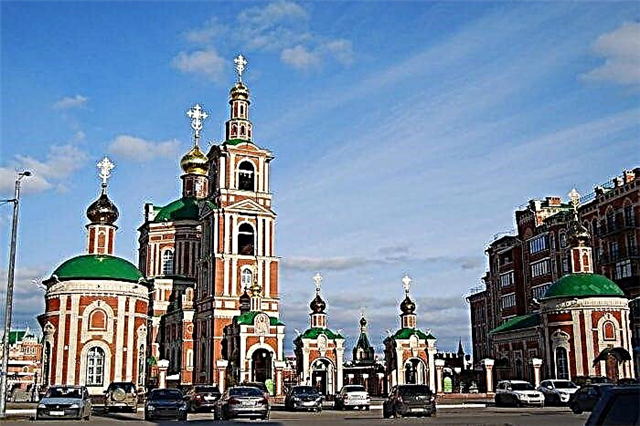
Ascension Cathedral
Built in the middle of the 18th century at the expense of the merchant Pchelkin, whose house is located near the Resurrection Cathedral as an architectural monument. The two-story cathedral is typical of temple architecture. The modern look of the temple is slightly different from the original - the cathedral was damaged during the Soviet era. There was an open terrace on both sides of the refectory, and there was also a four-tiered bell tower near the temple.

Historic merchant houses
The cultural and historical heritage of Yoshkar-Ola is not only modern architectural monuments. There are interesting old merchant houses in the city.
House of the merchant Pchelin
The merchant's mansion was built in the 18th century. The elegant and laconic building is decorated with baroque stucco moldings, arched windows are of different sizes. The building changed several owners - it housed a school, a revolutionary committee, and in wartime even a factory evacuated from Odessa. The rich history of the house has given rise to many urban legends. Residents of Yoshkar-Ola talk about underground passages and ghosts.

House of timber merchant Bulygin
A massive stone building, erected in 1835 by the architect Talantsev. In its appearance, the portico with four columns and the Corinthian order are clearly distinguished. The main office was located in the house, from which Bulygin managed his enterprises, he also rented out some of the rooms. During Soviet times, executions were carried out in the basement of the house. Now the mansion houses a museum of the history of the GULAG.

House of Naumov
Built in the 19th century. Located on Sovetskaya Street. The appearance of the house is unusual - its lower floor with high arched windows is built of stone, and the upper one is made of wood, with many carved decorations. Naumov lived in this house and conducted his trade affairs. After 1917, the district committee met in the merchant's mansion, later a printing house was located there. Now in the house with the status of a cultural heritage site there is a ceramic museum.

House of Korepovs
Located on Voskresenskaya Street. The merchant's wife Korepova, who bought it in the 19th century, united two houses into one building. On its first floor there was a store, the building also contained the county congress and the postal and telegraph office. The mansion with rich architecture is included in all excursion routes. The facades of the house are decorated with stucco molding, openwork wrought iron flowerpots. Now it houses a center for the protection of cultural monuments.



